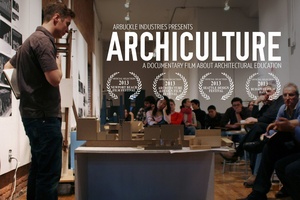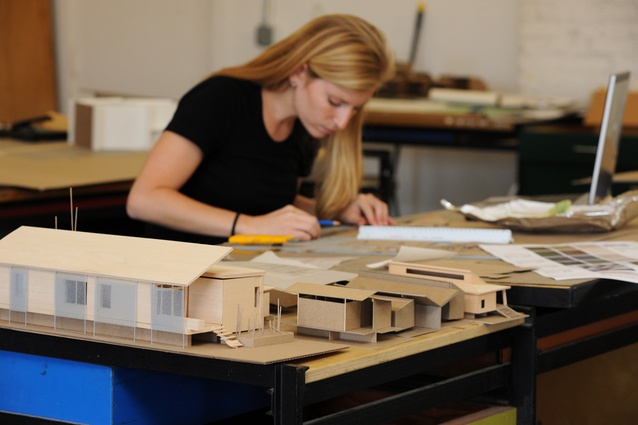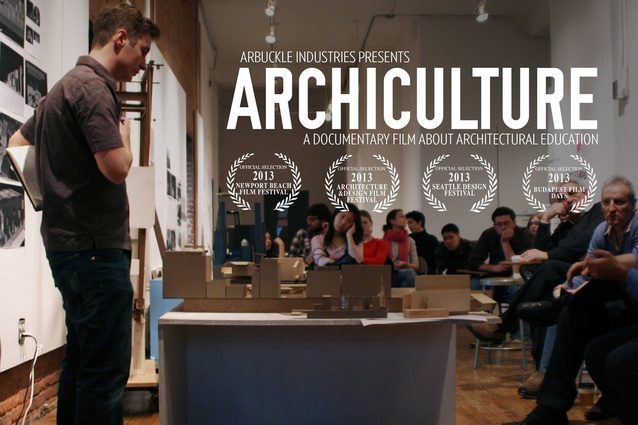Unprepared for practice?
Architectural graduate Thomas Denhardt asks whether architecture schools are falling short: producing students that are unprepared for the practicalities of the profession.

On the release of RIBA’s 2014 Skills Survey Report, Yarema Ronish, a director at Richard Morton Architects in London, commented: “I can think of no other profession where new graduates must wait a decade or more to be given significant responsibility because they have not acquired basic skills in university”.
Is Ronish’s claim accurate? Are architecture schools failing to prepare students properly for architectural practice?
It would appear that most people associated with the architectural profession agree with Ronish. Historically and today, architecture schools have been underpreparing students for practice. This is due to a focus which is predominantly on aesthetics and minimally on the practical concerns of the real world.
Adopting this methodology is denying students the equal importance of exercising both artistry and pragmatics in the architectural curriculum. These uneven concerns resonate among the student body, which is entering the profession with some members espousing bad habits that were bred through their sole devotion to the artistic endeavour.
Architecture, to most of us, carries great weight and public responsibility. Meanwhile, the role of the architect is diversifying, fulfilling vocations such as archivist, lawyer, accountant, marketing manager, personal printer, project manager, banker and mediator; the list is surprisingly endless.
For these reasons, it is paramount that architecture schools provide students with the right blend of artistry and pragmatics in their training, so they can earn their beginner stripes and hit the ground running when crossing the practice threshold. This imbalance gives students a diluted version of what architecture really is and it seems to be a universal predicament.
Archiculture – a 25-minute-long documentary which critically explores the architectural studio – brings to light many ideas focused around architectural education. Featured in the documentary is Mary Woods, a historian and professor at Cornell University, who believes schools have not equipped students for the realities of today’s practice for quite some time.

She feels that students need to understand and be exposed to practical constraints at school so they “can begin dealing with them in inventive and creative ways” prior to being faced with constraints in practice. The school, in this sense, would transform into a laboratory, permitting investigations, experimentations and observations designed for the real world. Woods thinks that “we are still that ivory tower”, where architecture schools are fixated firmly on intellectual pursuit and remain detached from realistic concerns.
In the film, Thom Mayne, a principal at Morphosis in New York, provides another dimension to this argument, identifying architecture as the “connective tissue between the two spheres of artistry and pragmatics”. He feels that architecture cannot exist without both, describing the all-encompassing dilemma that architects and schools face: “On the one hand, you will be practical and never produce work of any interest and, on the other, you will produce interesting work with no meaning or connectivity”.
Traditionally, there has been a tendency to segregate artistry and pragmatics, when they should be voiced as equally important in our schools’ curriculums. This seems illogical, since architecture needs to be functional in order to serve within its chosen environment. Aesthetic concerns are not the sole priority on the architect’s agenda professionally. Consequently, students who have entered architects’ offices recently for experience after architecture school are echoing these pragmatic deficiencies.
Matty Ryu, who is completing his master’s degree in architecture, testifies that the “education system stresses ‘big design ideas’ yet falls short when it comes to detailing these ideas, ultimately delegating this task to the engineer”. When pursuing an architectural internship, he found that the theoretical work he was taught at school was dissimilar to what was being undertaken in professional practice, making work experience challenging.
Ryu also drew the conclusion that, while at architecture school, students need to be given stricter time frames within which to work to develop better time-management skills, like those exercised in practice. This would be more beneficial to students, rather than schools leisurely offering design studio spaces from morning until late for “socialising and Facebooking”, he suggests.
Another student, who entered the architectural profession after completing a Bachelor of Architectural Studies degree, believes he needed to learn most things from scratch, such as “working drawings, building codes and building consent applications… everything you need to know in order to construct a building project or add value to an architectural business”. He suggests that architecture school offers a “workaholic culture… a harmful environment for students… (which) induces stress-related health issues”, rendering this type of practice as unsustainable.
The dichotomy of artistry and pragmatics is irregular, with students struggling to polish their design skills, rather than understanding how to construct their designs. This imbalance creates architectural graduates that lack the necessary competence to excel and do their jobs appropriately in the industry. Poor time management and unsustainable work routines are some of the ramifications of this artistic focus; qualities that are not as sought-after in a business environment.
Clearly, restricting coverage of how things are built, which is essentially the backbone to the architect’s toolkit, is impairing our future architects. Nevertheless, the pedagogical system is changing this outcome by drip-feeding built measures into the architectural curriculum, providing the much-anticipated pragmatic dosage which is yearned for by architectural graduates and many employers.
An example of this was the offsite prefabrication studio, which was conducted by Peggy Deamer and Anthony Brand at The University of Auckland. The design studio set itself apart from others by promising an industry-focused approach, beginning at the logistical end of the project rather than at the conceptual and abstract end. I found this quality highly appealing in Deamer’s pitch, since I was aware of shortly crossing the threshold from education to professional practice.
The schedule for the studio gave students a great introduction into what is prefabrication and how this technology is utilised in practice, and included workshops and class trips. Prototyping, which was central to this design process, allowed students to understand and reflect on how their design decisions were working through making.
Bamcrete, a hybrid bamboo and concrete prefabrication system, was the pragmatically influenced design I developed; it allowed me to explore, manipulate and experiment with the material properties of both bamboo and concrete. The result was a Bamcrete product range that could be retrofitted onto existing buildings or appointed directly in a new build.
This practical element, at the forefront of the studio programme, permitted students to understand the advantages of prefabrication – reduction in time, cost, energy, materials and improved safety – while appreciating the magnitude of designing right down to the finer details of the project. It was highly gratifying. This teaching style not only married artistry and pragmatics but also taught the additional lesson of collaboration and communicating effectively with other individuals – real clients and tradespeople – which are the essential traits of a seasoned architect.
So, are architecture schools creating well-prepared candidates for the architectural profession? Unfortunately, not quite. Ronish’s claim is precise. Globally, architectural students are being short-changed, evidently, when it comes to education. The compulsion to craft artistic talent and neglect pragmatics in the architectural equation results in design ideas that are wild and fictional.
Five years of education is a very short time period during which to cover a colossal amount of information when it comes to architecture. However, this constraint should not prevent schools from teaching students how to detail and build their design projects. Making a change for the better will arm the next generation of architects with the right tools to thrive in this industry from the outset.
Perhaps a restructuring of the architectural curriculum would suffice, such as incorporating more cross-disciplinary integration between architecture students and other specialist fields, such as collaborating with engineering students, for example. This would generate early professional networks in schools and help engraft pragmatics into the architecture curriculum. Without considering alternatives like this, we cannot anticipate different results. As they say, architecture may be the mother of the arts but it is not simply just art.











